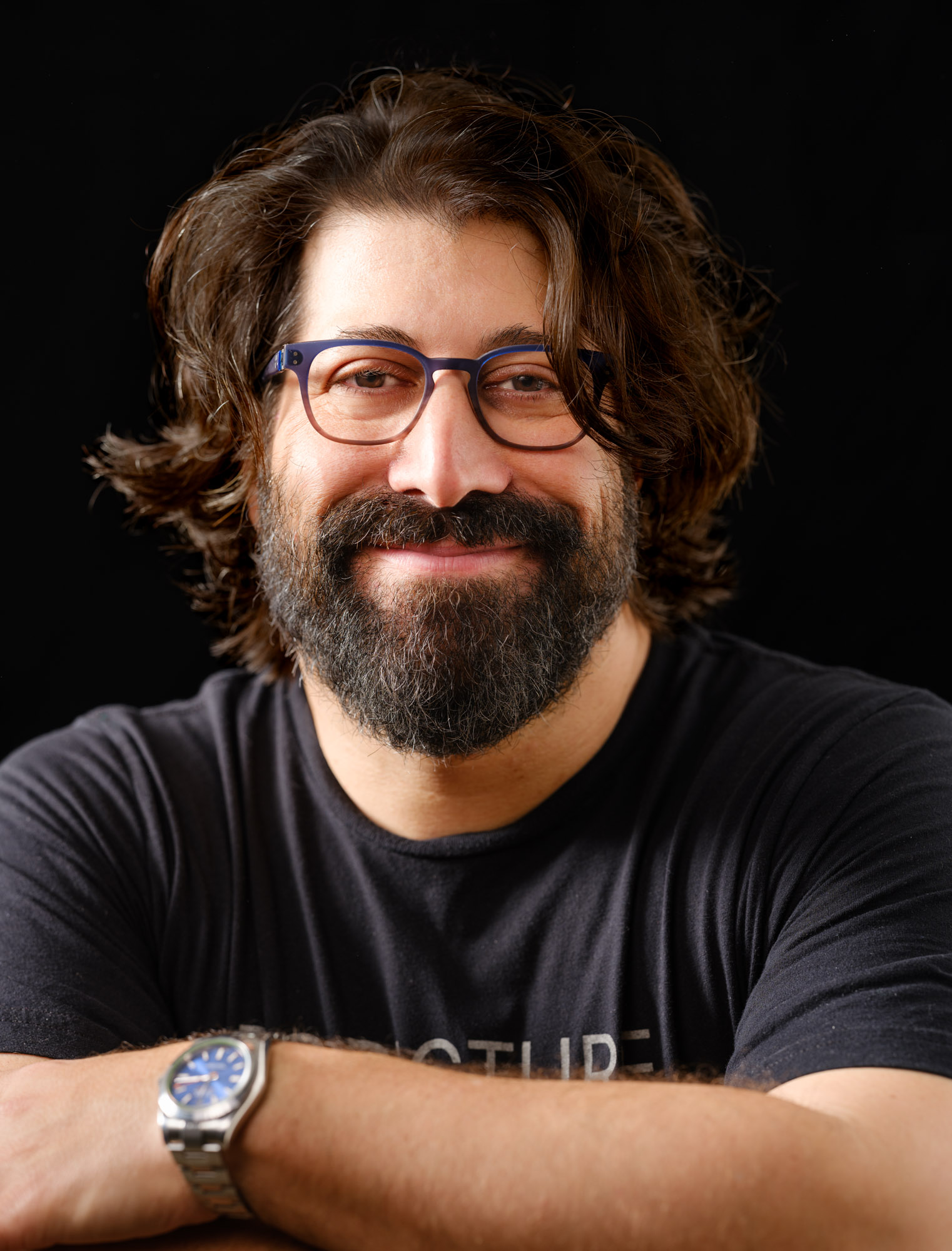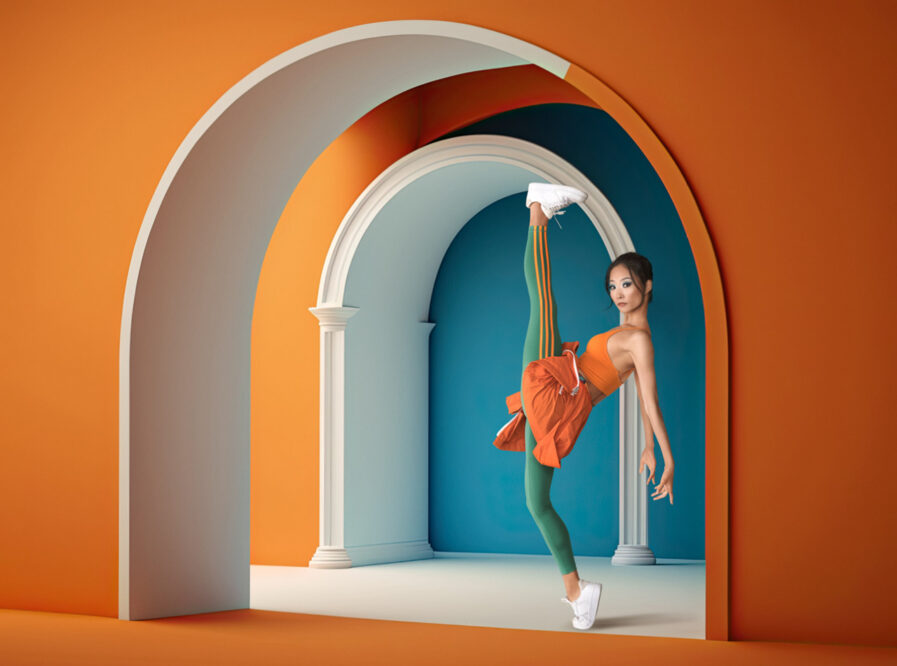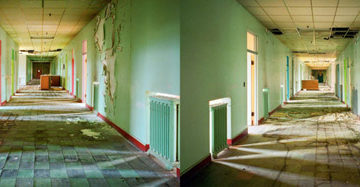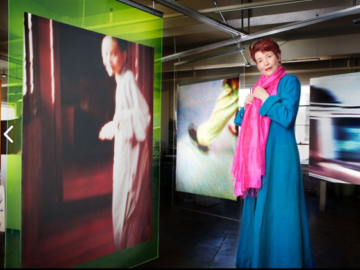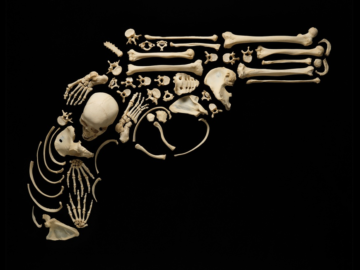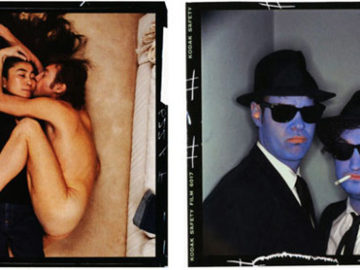Michael Winokur, a talented photographer based in the USA, won a Gold Award in the Photography 2024 competition for his “Text to Dance” project commissioned by the San Francisco Ballet. His innovative work bridges print and dance, capturing the essence of movement and creativity in celebration of the ballet’s 90th anniversary. Through this project, Michael demonstrates his dedication to combining artistry with technology, creating visually stunning images that reflect the future of dance. Below, Michael delves into the creative process behind the project, sharing insights on how he navigated the challenges and embraced new technologies to bring his vision to life.
By: Michael Winokur, Photographer, Michael Winokur Photography
Photographers have a habit of being gear-focused. I would tell you I’m not, but I do spend a decent amount of time paying attention to new technologies. Some of my attention is currently on LED stages for in-camera VFX – ICVFX. Overall, though, I’m interested in ideas, collaboration, problem-solving, and execution.
How does an artist decide what new process or technique to embrace and what to reject? We resist change or embrace the latest based on our own ideas, experience, or peer consensus, often valuing these inputs over the actual value proposition. Testing new tools should be part of any career, as should life-long learning. Why? Because you can, it’s fun and exciting, and then you have tools in your mental toolshed when you need them.
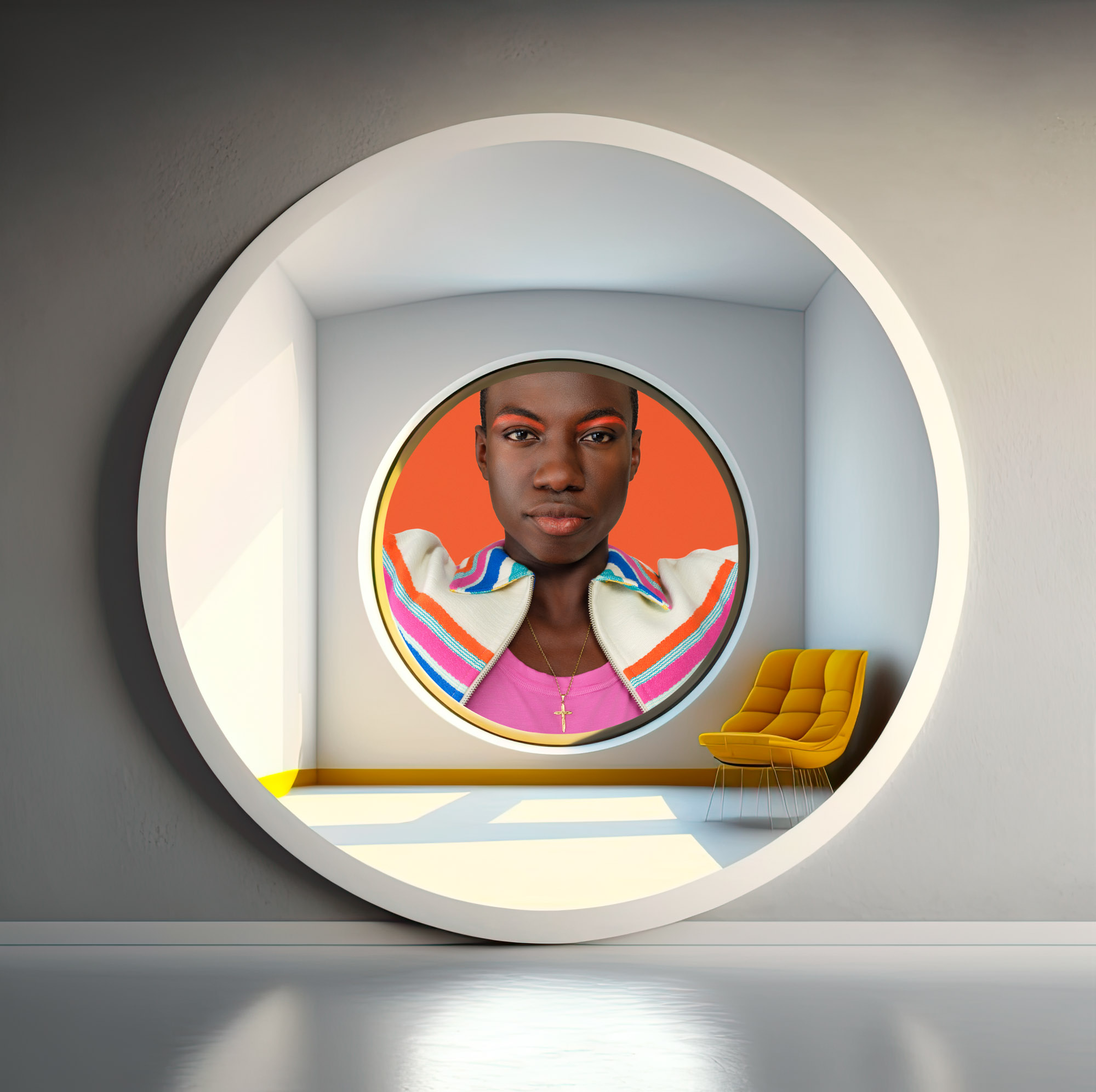
How does one filter out the camera and gear marketing noise or trendy techniques to make good choices? I have more than one friend who is killing themselves buying and selling cameras to get just the right tool. I know another photographer who embraced a trendy post-process to the point that the process took over the work. The hard truth comes in a simple answer. You have to know your work and know where it’s heading so you can pick and choose what fits and what’s noise.
For example, the project Graphis invited me to write about involved the image generation tool MidJourney. My work is about people. I think about portraiture as a high-level idea as opposed to a style. So it’s pretty straightforward to say I’m not interested in metahumans and computer-generated people. Of course, we could argue whether these tools should exist or how dangerous they may be to creative professionals. When I consider what I believe is valuable about a film or photograph—creating introductions, telling stories, and preserving history—I’m just not interested in fake people. Real people are way more interesting.
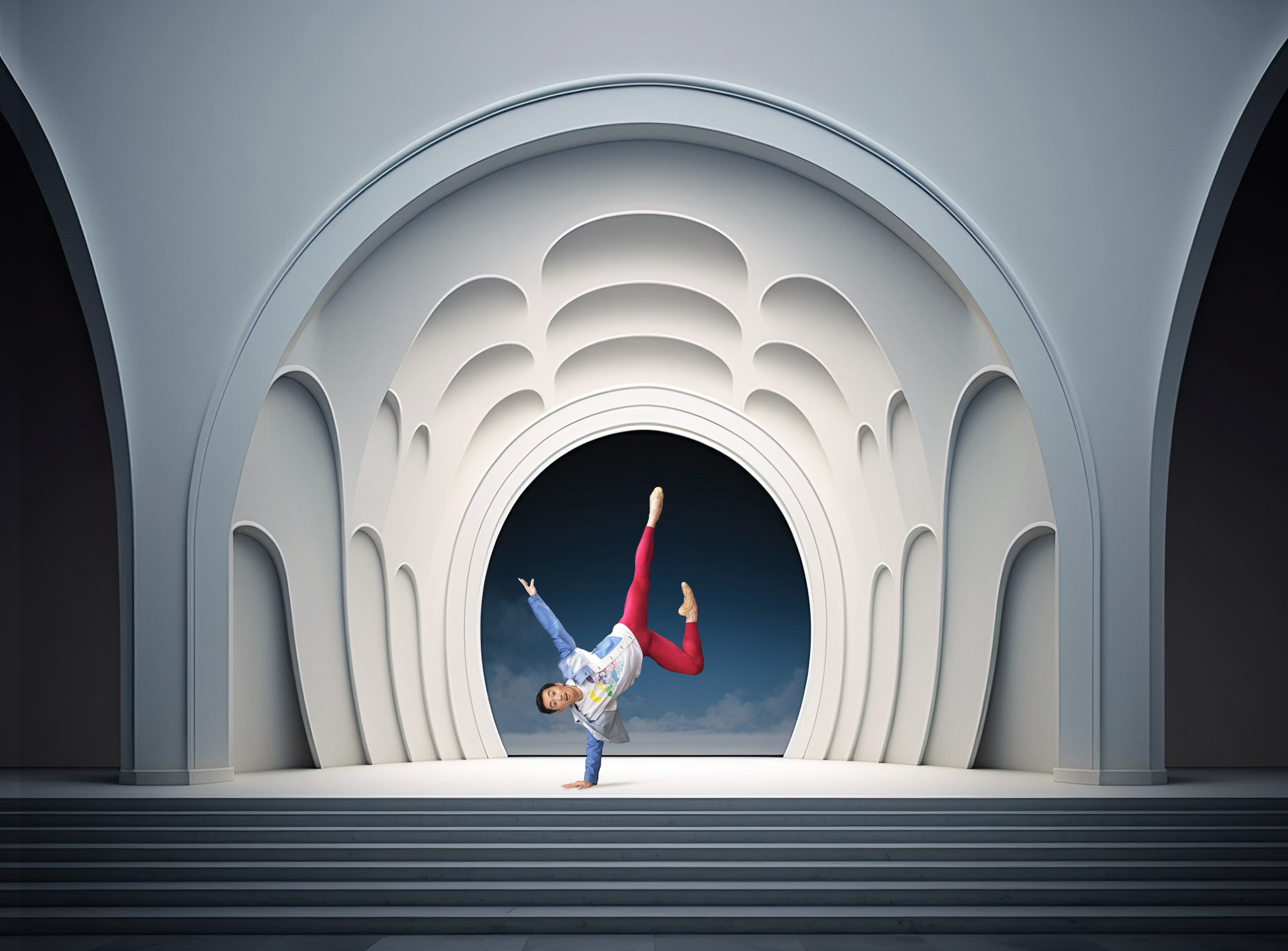
I got a call from a dream client, the San Francisco Ballet. To celebrate their 90th anniversary, the ballet had commissioned a series of dances called Next @ 90. The work was meant to show a break from tradition and a look to the future. I was hired to photograph a group of their world-class dancers. There were, of course, some limitations. We would have to shoot on a rehearsal stage, not on location. There would be a lot of movement, meaning I needed the lighting to work across a large space. That boiled down to shooting in white with the intention of replacing the backgrounds.
Usually, I would plan on having background plates in hand before lighting and shooting a project requiring composites. In this case, we had a few ideas about backgrounds but didn’t have plates to guide us. I came out of the shoot with a set of selects and worked on some mock-ups based on two ideas. One was washes of colorful light, and the other was San Francisco cityscapes. Neither was exciting to me. Neither felt like NEXT. The color light felt like 90’s tech, and the city backgrounds were too gritty.
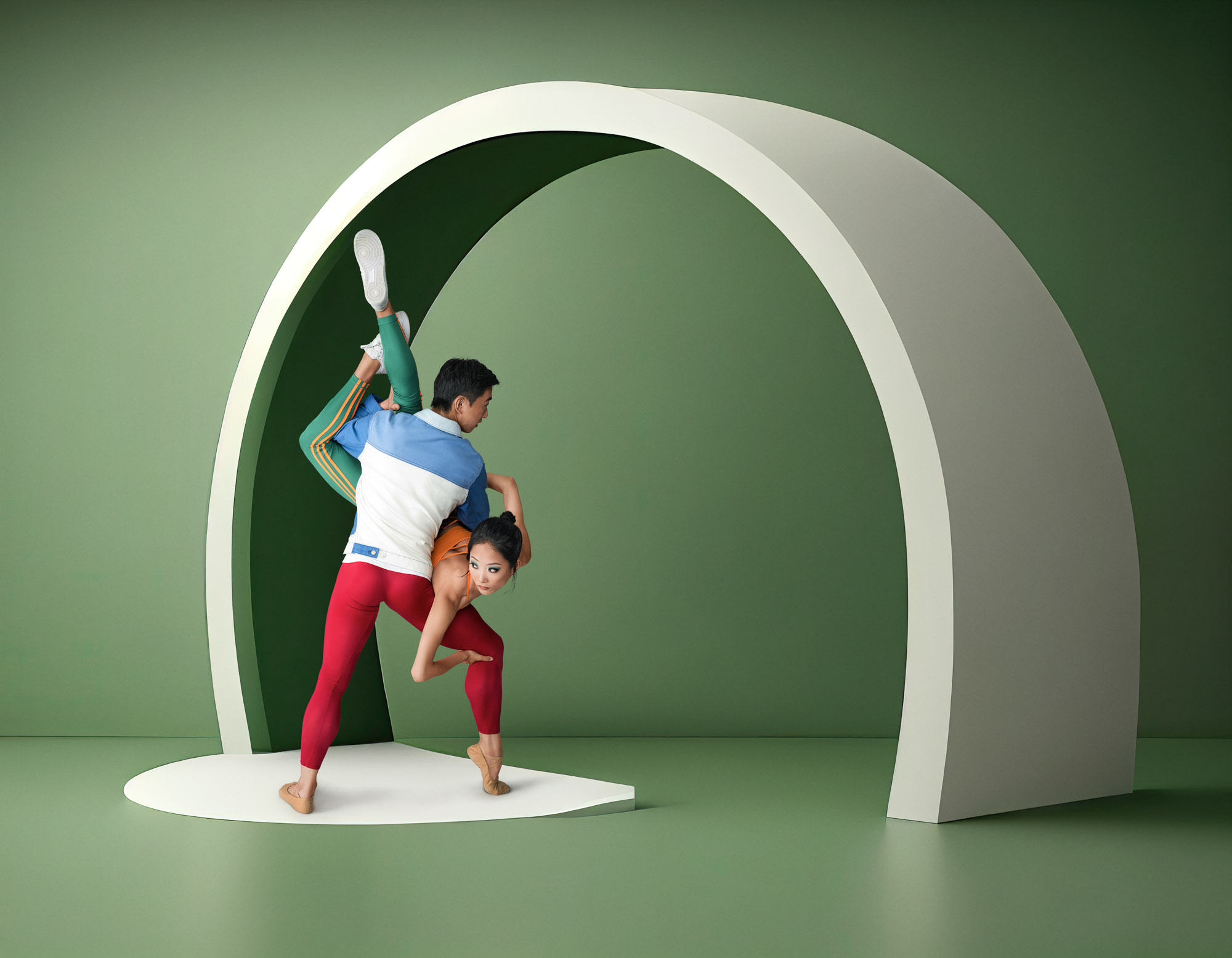
I had been keeping up with the development of Midjourney and similar tools. It hadn’t been that interesting to me. As I said, I don’t do fake people. A new version, 4.0, had just been released and was supposed to be much better. Maybe I could combine my people with generated sets. Maybe.
To show the idea of NEXT while staying in the world of dance, I had the idea to create new stages for them to dance on. It’s not futuristic, but it’s not realistic, either. With the word stage, the results were either too literal or were stagecoaches. I started prompting the tool with various phrases that all included the word “arch” for proscenium arch. The ones that worked best felt like a beautiful minimalist set build. I was staying in the reality of the people while elevating the production design.
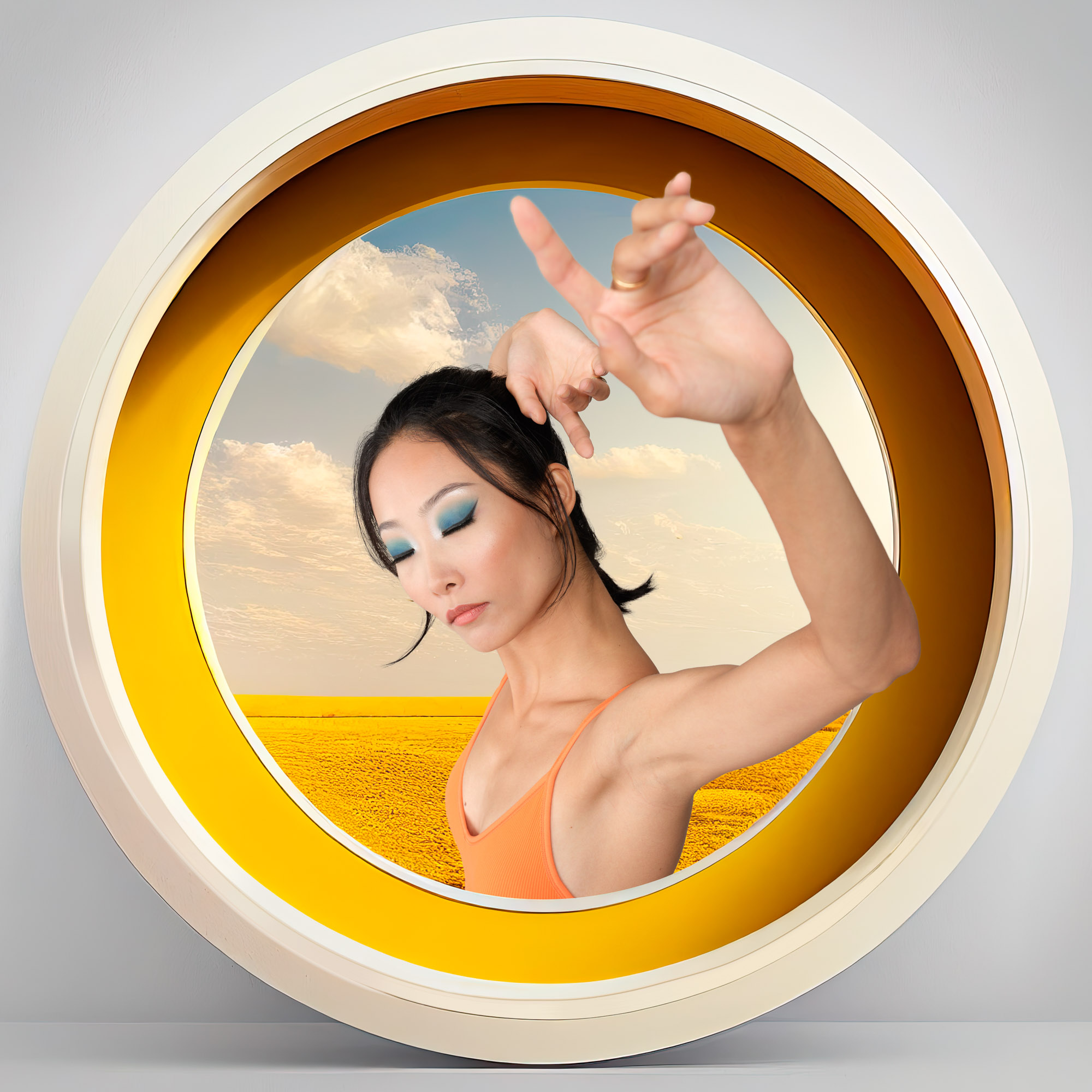
I always want the craft to rise to meet the ideas; my motto is “Creativity and Craft.” In this case, technology helped me bring the concept and execution to the level I needed while respecting the budget.
Creating the backgrounds took more time and effort than one would imagine. The image generation tools and my skills evolved during the process. I found that the ability to iterate was endless, but the ability to direct the machine is overstated, and the results are more random than most people understand. The generated images also contained artifacts that presented much extra work and cost in the retouching process.
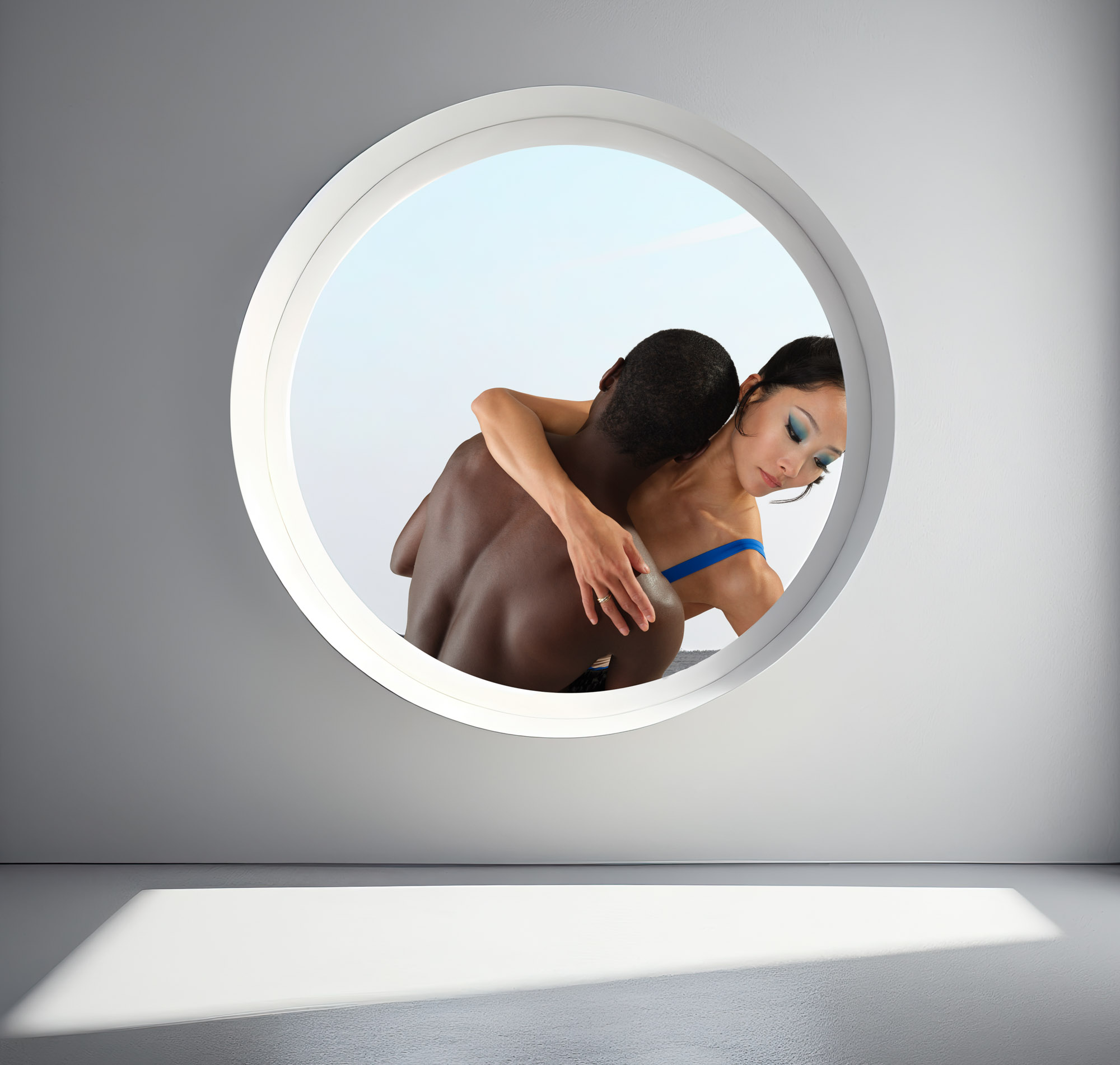
The generative AI tools are evolving so fast that any review of their flaws needs to be updated. Even now, if I redid this project, the results from the computer would be very different. Abraham Maslow wrote in 1966, “If the only tool you have is a hammer, it is tempting to treat everything as if it were a nail.” The moral of my story is that you need to know how to swing a hammer so you know what to do when the idea is a nail, but you don’t need to use a hammer just because it exists.
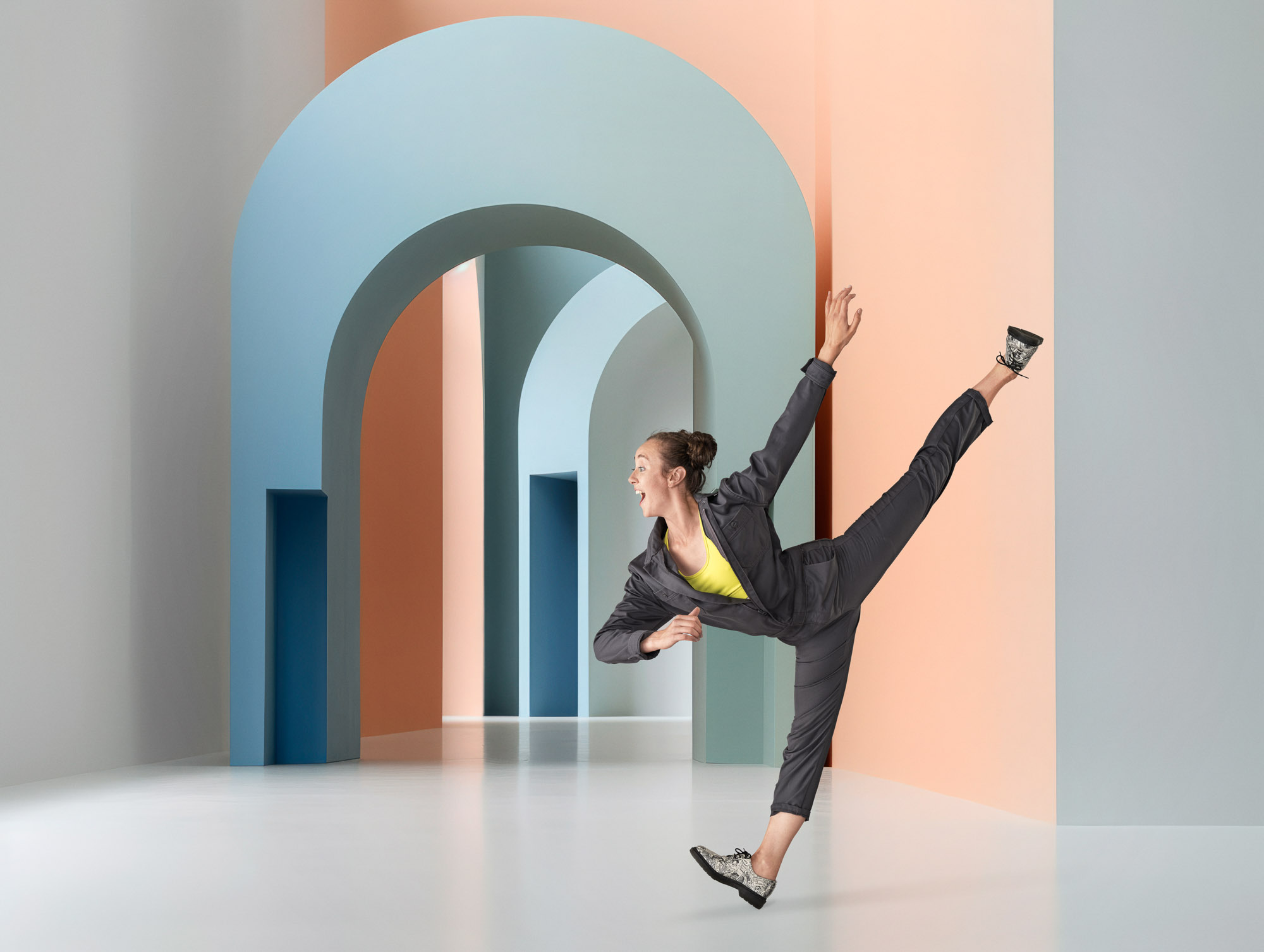
Michael Winokur is a film director and still photographer with roots in journalism. Michael thinks like an artist and works like a craftsman. Whether it’s a three-act story or a single sublime image, Michael looks to express individual identity as well as capture our common humanity. The good stuff. While still in high school, he worked as a photojournalist for city newspapers in Philadelphia, developing an interest in portraiture and a narrative style focused on capturing the essential elements of character. Through overlapping careers as an award winning documentary photographer, journalist, commercial photographer and film director, visual storytelling has remained a common thread and driving purpose.
